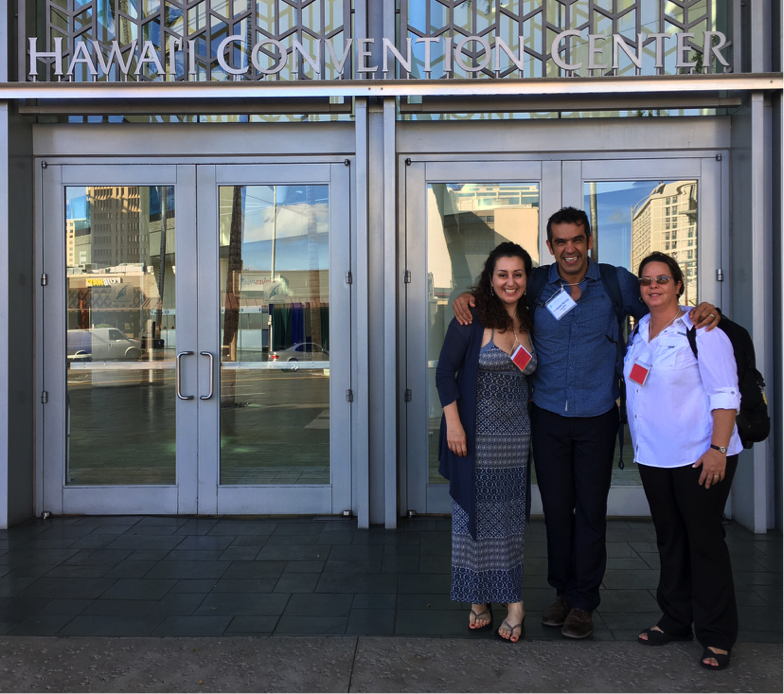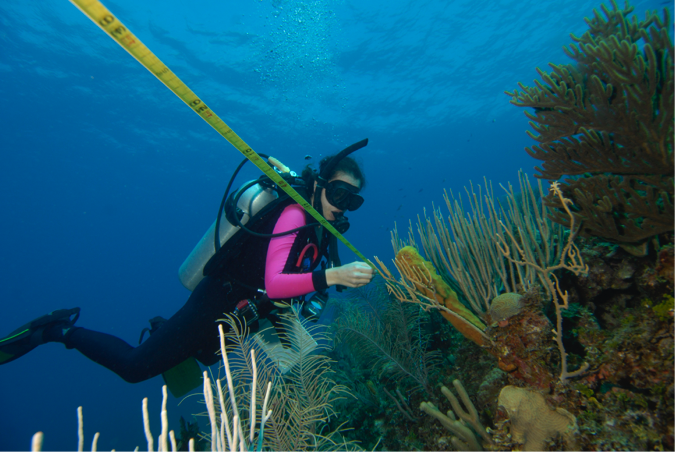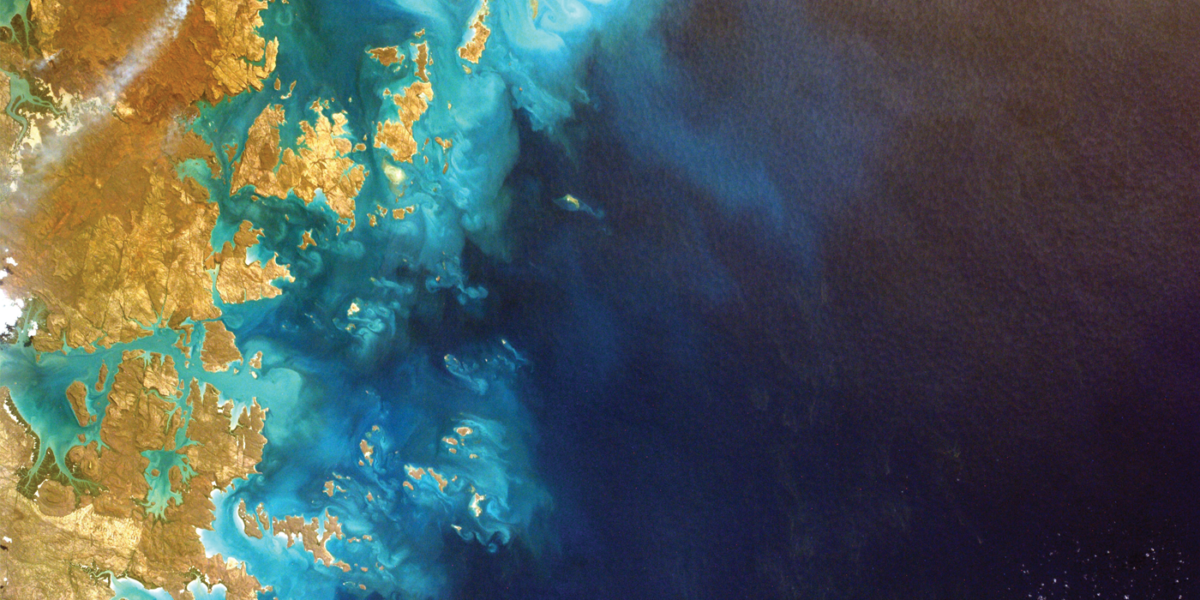At the end of June, I had the pleasure and privilege to attend the 13th International Coral Reef Symposium (ICRS), the premier conference for coral reef scientists from all over the world held every four years. I was there with Fernando Bretos, the director of the CubaMar program.
I attended my first ICRS presenting as a PhD student in October 2000 in Bali, Indonesia. Picture me: a wide-eyed grad student hungry to fulfill my curiosity about all things coral.That first ICRS conference allowed me to soak it all in and fill my mind with questions to investigate ever since. It consolidated my career path like no other professional meeting during my graduate school years. The Bali meeting – with the people I met there, and what I learned – is when it became clear to me that studying coral reefs for the rest of my life would indeed be the most fulfilling profession.
“Fast forward 16 years, and I am living that dream to the fullest serving as a coral reef ecologist for the Cuba Marine Research and Conservation Program of The Ocean Foundation.” – Daria Siciliano
Fast forward 16 years, and I am living that dream to the fullest serving as a coral reef ecologist for the Cuba Marine Research and Conservation Program (CariMar) of The Ocean Foundation. At the same time, as an associate researcher, I am leveraging the amazing laboratory and analytical resources of the Institute of Marine Sciences of the University of California Santa Cruz to carry out the lab work needed for our investigations on Cuban coral reefs.
The ICRS meeting last month, held in Honolulu, Hawaii, was a bit of a homecoming. Prior to devoting myself to the relatively understudied and endlessly fascinating coral reefs of Cuba, I spent more than 15 years studying Pacific coral reefs. Many of those years were dedicated to exploring the remote Northwestern Hawaiian Islands archipelago, now called the Papahānaumokuākea Marine National Monument, the boundaries of which conservation partners and the Pew Charitable Trusts are currently petitioning for an expansion. They gathered signatures for this endeavor at the ICRS meeting last month, which I signed enthusiastically. At this conference I had a chance to reminisce about many underwater adventures in that fascinating archipelago with former colleagues, collaborators and friends. Some of which I hadn’t seen for a decade or more.

Daria, Fernando and Patricia of the Cuban Center for Marine Research at ICRS
With my colleague Fernando Bretos, the man who has worked for decades in the US to bridge the gap between Cuban and American coral reef science, we had many fruitful meetings, many of them unplanned. We met with Cuban colleagues, coral restoration start-up enthusiasts (yes, such a start-up actually exists!), grad students, and seasoned coral reef scientists. These meetings ended up being the highlight of the conference.
On the first day of the conference, I mostly stuck to the biogeochemistry and paleoecology sessions, given that one of our current research lines at CubaMar is the reconstruction of past climate and anthropogenic input to Cuban coral reefs using geochemical techniques on coral cores. But I did manage to make it to a talk that day on the pollution from personal care products such as sunscreen lotions and soaps. The presentation went deep into the chemistry and toxicology of common use products, such as oxybenzone from sunscreens, and demonstrating the toxic effects they have on coral, sea urchin embryos, and larvae of fish and shrimp. I learned that the pollution stems not just from the products washing off from our skin as we bathe in the ocean. It also comes from what we absorb through the skin and excrete in urine, eventually making its way to the reef. I’ve known about this issue for years, but it was the first time I actually saw the toxicology data for corals and other reef organisms – it was quite sobering.

Daria surveying the reefs of Jardines de la Reina, Southern Cuba, in 2014
81% of the reefs in the remote Northern sector of the Great Barrier Reef have been severely bleached, with only 1% escaping untouched. – Dr. Terry Hughes
The 2016 mass bleaching event is the third occurring on the GBR (previous ones happened in 1998 and 2002), but it is by far the most severe. Hundreds of reefs bleached for the first time ever in 2016. During the two previous mass bleaching events, the remote and pristine Northern Great Barrier Reef was spared and considered to be a refugium from bleaching, with its many large, long-lived coral colonies. That’s clearly not the case today. Many of those long-lived colonies have been lost. Due to these losses “the Northern GBR will not look like it did in February 2016 any more in our lifetimes” said Hughes.
“The Northern GBR will not look like it did in February 2016 any more in our lifetimes.” – Dr. Terry Hughes
Why was the Southern sector of the GBR spared this year? We can thank cyclone Winston in February 2016 (the same that swept through Fiji). It landed on the southern GBR and brought the sea surface temperatures down considerably, thereby mitigating the bleaching effects. To this, Dr. Hughes added sarcastically: “We used to worry about cyclones on reefs, now we hope for them!” The two lessons learned from the third mass bleaching event on the GBR is that local management doesn’t ameliorate bleaching; and that local interventions may help foster (partial) recovery, but stressed that reefs simply cannot be “climate-proofed.” Dr. Hughes reminded us that we have already entered an era when the return time of mass bleaching events caused by global warming is shorter than the recovery time of long-lived coral assemblages. Thus the Great Barrier Reef has changed forever.
Later in the week, Dr. Jeremy Jackson reported on results from analyses spanning from 1970 to 2012 from the wider Caribbean, and determined instead that local stressors trump global stressors in this region. These results support the hypothesis that local protections can increase reef resilience in the short term pending global action on climate change. In his plenary talk, Dr. Peter Mumby of the University of Queensland reminded us about the “subtlety” in coral reefs. The cumulative effects of multiple stressors are reducing the diversity of reef environments, so that management interventions are targeted at reefs that no longer differ dramatically. Management actions have to adapt to said subtlety in coral reefs.
The lionfish session on Friday was well attended. I was pleased to realize that the active debate continues about the biotic resistance hypothesis, whereby native predators, by either competition or predation or both, are capable of maintaining the lionfish invasion in check. That’s what we tested in Jardines de la Reina MPA in southern Cuba during the summer of 2014. It is interesting to learn it is still a timely question given that the Pacific lionfish population in the Caribbean continues to thrive and expand.
Compared to the first ICRS meeting I was able to attend in 2000, the 13th ICRS was equally as inspiring, but in a different way. Some of the most inspiring moments for me happened when I ran into some of the “elders” of coral reef science, who were prominent or plenary speakers at the conference Bali, and today I could still see a twinkle in their eye as they talked about their favorite corals, fish, MPAs, zooxanthellae, or the most recent El Niño. Some well past retirement age… but still having so much fun studying coral reefs. I don’t blame them of course: Who would want to do anything else?







